This article was co-authored by Adam Shuty and by wikiHow staff writer, Jennifer Mueller, JD. Adam Shuty is a Certified Strength and Conditioning Specialist and owner of ATOMIC Total Fitness, a fitness training studio in New York, New York. With over 15 years of experience, Adam specializes in weightlifting, strength and conditioning, and martial arts. Adam holds a BS in Industrial Engineering from Virginia Polytechnic Institute and State University. In 2014, Adam appeared on the Live With Kelly and Michael Show as one of the top five fitness instructors in the country.
There are 10 references cited in this article, which can be found at the bottom of the page.
This article has been viewed 34,466 times.
The term "toe raises" is used to refer to two different exercises. In the first, you're only moving your toes. This exercise strengthens your feet and improves your balance.[1] "Toe raises" can also refer to an exercise in which you raise your body from flat feet up to your toes. This exercise is also called a "calf raise," and is used to strengthen your calves, ankles, shins, and feet. If you have an injury or other condition that affects your feet, talk to your doctor or physical therapist before doing any of these exercises.[2]
Steps
Strengthening Your Feet with Toe Raises
-
1Start with seated toe raises. Sit on the edge of a sturdy chair with your knees at right angles and your feet flat on the floor. Sit up straight with your shoulders back. You can hold the side of the chair or rest your hands flat on your thighs. Then, raise your toes up off the ground as far as you can. Hold the position for 10 seconds, breathing deeply, then release. Repeat 20 to 30 times.[3]
- Seated toe raises are easier to start with because your feet are not supporting your body weight. Later, when your feet are stronger, you can move on to standing toe raises.
- This exercise is safe to do every day, or as needed if your feet are feeling stiff or sore. However, you shouldn't continue this exercise if it causes pain.
-
2Progress to standing toe raises with support. Use a sturdy table or the back of a sturdy chair to balance. Stand with your feet about hip-width apart and your back straight. Just as with seated toe raises, raise your toes off the ground, dropping your weight back to your heels. Hold for 10 seconds then release. Repeat 20 to 30 times.[4]
- Use the chair or table for balance, but be careful not to collapse into it or lean on it. Start by using 2 hands to maintain balance. With time, you can move on to just using one hand, then finally no hands.
- This exercise is generally safe to do every day, as long as you don't feel any pain while doing it. Once you progress to doing toe raises without support, you can even do mini-sets throughout the day, such as when you're cooking or brushing your teeth.
Tip: Doing this exercise in front of a mirror can help you check your posture to make sure you're standing tall and not leaning on your support.
Advertisement -
3Counter standing toe raises with heel raises. Standing tall, start by raising your toes and rolling your weight back on your heels. Hold that position for a full breath cycle, then slowly roll forward onto your toes. Return to a neutral, flat-footed position. Do 3 sets of 10 repetitions of this exercise. Focus on maintaining a smooth, controlled movement.[5]
- Combining these movements stretches and strengthens your entire foot by taking it through its full range of motion. You'll also strengthen your shins.
- This exercise is safe to do every day. However, you should stop if you feel any pain in your feet or shins.
-
4Try toe raises on one foot at a time. Doing basic toe raises on one leg at a time allows you to isolate and train each foot separately. This is helpful if one leg is stronger than the other, or if you've previously injured one leg, because it enables you to feel the difference between the two sides.[6]
- If one side is noticeably weaker than the other, you might want to add more repetitions with that side to bring it up to the same level as the stronger side.
- You can generally do this exercise every day. Use a wall to help maintain your balance and posture on one leg.
-
5Add a resistance band to strengthen your feet and lower legs. Sit on the floor with your legs straight out in front of you and loop a resistance band around the balls of your feet. Pull the resistance band taut, then try to flex your foot forward as far as it will go. Hold the flex for a breath cycle, then bring it back towards your body using a slow, controlled movement. Do 3 sets of 10 repetitions of this exercise.[7]
- If you don't have resistance bands, you can also work with a rolled-up towel or T-shirt looped around your feet.
- You can do this exercise with both feet at the same time or alternating feet. If you only do one foot at a time, bend the knee of the other leg so the foot is resting flat on the ground.
- Do resistance exercises 2 to 3 times a week.
Trying Calf Raises
-
1Raise up onto the balls of your feet to do a basic calf raise. Start in a standing position with your feet about hip-width apart and your back straight. Raise up onto the balls of your feet, or even your toes, keeping your back straight. Then slowly lower back down. Do 3 sets of 10 repetitions of this exercise.[8]
- When you first start out, you might want to use a table, counter, or sturdy chair to support your balance — especially if you're not accustomed to standing on your toes.
- It's easy to start pitching forward while you're doing this exercise. Make sure you're standing tall and your head is moving upward, not forward.
- This exercise is safe to do every day. You might also incorporate it as a warm-up or cool-down for your lower legs, either before or after aerobic exercise, such as running or biking.
- You can find calf raise machines in most gyms.[9]
-
2Alternate between your feet rather than doing both at the same time. Stand in front of a wall, about arm's length away. Press your palms against the wall for balance. Bend one knee to lift your foot off the ground, then roll up to the ball of your other foot. Lower and repeat. Do 3 sets of 10 repetitions of this exercise on each leg.[10]
- With this exercise, you have the option of alternating feet with each calf raise or doing all the repetitions with one foot and then switching to the other. Do it whichever way is easiest for you to keep up with.
- See if you can squeeze the quad and lock out the knee as you come up onto the ball of your foot.[11]
- Single-leg exercises can help you pinpoint any muscle imbalances in your legs.[12]
-
3Stand on a step to drop your heels below your toes. When doing a calf raise, you can increase resistance without any equipment by simply standing on the edge of a stair or any stable raised surface. Keep your toes and the balls of your feet on the stair and allow the back half of your foot and your heels to hang off the edge.[13]
- Raise up on the balls of your feet the same way you did with a basic calf raise. You'll feel the burn in your calves because your heels are traveling a longer distance and gravity provides a little more resistance. Start with 2 sets of 5 repetitions and work your way up to 3 sets of 10 repetitions.
- Use this exercise as a progression of regular calf raises after they stop being challenging or providing the stretch you need.
Tip: If your foot needs more support, you can do the same exercise on a slanted surface with your toes higher than your heels.
-
4Hold a dumbbell in each hand while doing a basic calf raise. If a basic calf raise isn't providing much of a challenge, adding weight can make it more of a workout. Hold the same amount of weight on each side, even if you're only doing calf raises on one leg at a time.[14]
- You can add weight to any of the calf-raise variations as well — just make sure you can maintain balance while completing the exercise with correct form.
- If you need to use a wall or other structure to maintain your balance, you can use ankle weights to add resistance.
- Do resistance exercises 2 to 3 times a week. If you already have a strength-building resistance routine built into your exercise regimen, simply add this exercise to your existing routine.
Expert Q&A
-
QuestionWhy can't I raise up on my toes?
 Adam ShutyAdam Shuty is a Certified Strength and Conditioning Specialist and owner of ATOMIC Total Fitness, a fitness training studio in New York, New York. With over 15 years of experience, Adam specializes in weightlifting, strength and conditioning, and martial arts. Adam holds a BS in Industrial Engineering from Virginia Polytechnic Institute and State University. In 2014, Adam appeared on the Live With Kelly and Michael Show as one of the top five fitness instructors in the country.
Adam ShutyAdam Shuty is a Certified Strength and Conditioning Specialist and owner of ATOMIC Total Fitness, a fitness training studio in New York, New York. With over 15 years of experience, Adam specializes in weightlifting, strength and conditioning, and martial arts. Adam holds a BS in Industrial Engineering from Virginia Polytechnic Institute and State University. In 2014, Adam appeared on the Live With Kelly and Michael Show as one of the top five fitness instructors in the country.
Certified Strength & Conditioning Specialist If you can't do a toe or calf raise because you're physically unable to do so, I'd recommend going to see a doctor. This is something that a healthy individual should be able to do.
If you can't do a toe or calf raise because you're physically unable to do so, I'd recommend going to see a doctor. This is something that a healthy individual should be able to do. -
QuestionAre there any ways to make this harder at the gym?
 Adam ShutyAdam Shuty is a Certified Strength and Conditioning Specialist and owner of ATOMIC Total Fitness, a fitness training studio in New York, New York. With over 15 years of experience, Adam specializes in weightlifting, strength and conditioning, and martial arts. Adam holds a BS in Industrial Engineering from Virginia Polytechnic Institute and State University. In 2014, Adam appeared on the Live With Kelly and Michael Show as one of the top five fitness instructors in the country.
Adam ShutyAdam Shuty is a Certified Strength and Conditioning Specialist and owner of ATOMIC Total Fitness, a fitness training studio in New York, New York. With over 15 years of experience, Adam specializes in weightlifting, strength and conditioning, and martial arts. Adam holds a BS in Industrial Engineering from Virginia Polytechnic Institute and State University. In 2014, Adam appeared on the Live With Kelly and Michael Show as one of the top five fitness instructors in the country.
Certified Strength & Conditioning Specialist Yes, there are calf raise machines you'll find in most gyms. You kind of sit down in a seated position with your feet elevated on this platform. Then, you put your knees against these pads. These will give you some resistance and make the exercise a little more productive in terms of energy expenditure and potential gains.
Yes, there are calf raise machines you'll find in most gyms. You kind of sit down in a seated position with your feet elevated on this platform. Then, you put your knees against these pads. These will give you some resistance and make the exercise a little more productive in terms of energy expenditure and potential gains. -
QuestionAre there any variations you can do to mix this up?
 Adam ShutyAdam Shuty is a Certified Strength and Conditioning Specialist and owner of ATOMIC Total Fitness, a fitness training studio in New York, New York. With over 15 years of experience, Adam specializes in weightlifting, strength and conditioning, and martial arts. Adam holds a BS in Industrial Engineering from Virginia Polytechnic Institute and State University. In 2014, Adam appeared on the Live With Kelly and Michael Show as one of the top five fitness instructors in the country.
Adam ShutyAdam Shuty is a Certified Strength and Conditioning Specialist and owner of ATOMIC Total Fitness, a fitness training studio in New York, New York. With over 15 years of experience, Adam specializes in weightlifting, strength and conditioning, and martial arts. Adam holds a BS in Industrial Engineering from Virginia Polytechnic Institute and State University. In 2014, Adam appeared on the Live With Kelly and Michael Show as one of the top five fitness instructors in the country.
Certified Strength & Conditioning Specialist Totally! You can do a one-armed calf raise to put a little more weight on your muscles. Just make sure that you do the same number of reps on each leg. You can also achieve a similar workout with balancing exercises that don't require raising your calves. There are even flexing exercises you can do to strengthen your calves and quads.
Totally! You can do a one-armed calf raise to put a little more weight on your muscles. Just make sure that you do the same number of reps on each leg. You can also achieve a similar workout with balancing exercises that don't require raising your calves. There are even flexing exercises you can do to strengthen your calves and quads.
Warnings
- Don't start any new exercise program without first consulting your doctor, especially if you have a recent injury or chronic health condition.⧼thumbs_response⧽
References
- ↑ https://www.med.unc.edu/aging/cgec/exercise-program/videos/strength-exercises/toe-raises/
- ↑ https://orthoinfo.aaos.org/en/recovery/foot-and-ankle-conditioning-program/
- ↑ http://www.nshealth.ca/sites/nshealth.ca/files/patientinformation/0943.pdf
- ↑ https://www.arthritis.org/health-wellness/healthy-living/physical-activity/walking/walk-with-ease/wwe-exercises
- ↑ https://www.saintlukeskc.org/health-library/leg-and-knee-exercises-heel-raise
- ↑ https://www.med.unc.edu/aging/cgwep/courses/exercise-program/videos/strength-exercises/toe-raises/
- ↑ https://www.med.umich.edu/1libr/PMR/TherabandExerciseProgram.pdf
- ↑ https://www.youtube.com/watch?v=-M4-G8p8fmc
- ↑ Adam Shuty. Certified Strength & Conditioning Specialist. Expert Interview. 25 June 2021.
- ↑ https://www.insider.com/guides/health/fitness/calf-raises
- ↑ Adam Shuty. Certified Strength & Conditioning Specialist. Expert Interview. 25 June 2021.
- ↑ Adam Shuty. Certified Strength & Conditioning Specialist. Expert Interview. 25 June 2021.
- ↑ https://www.insider.com/guides/health/fitness/calf-raises
- ↑ https://www.insider.com/guides/health/fitness/calf-raises
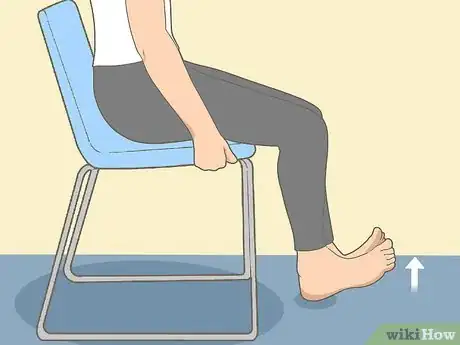

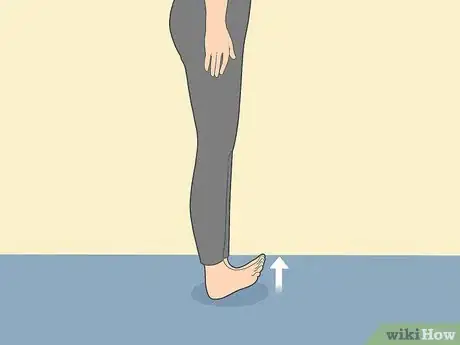
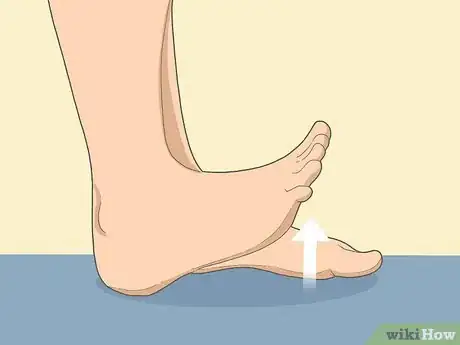
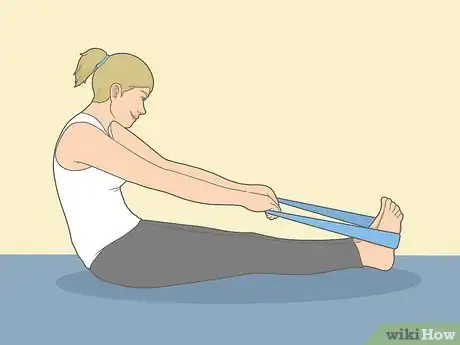
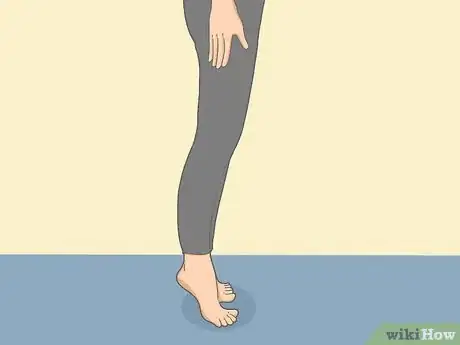

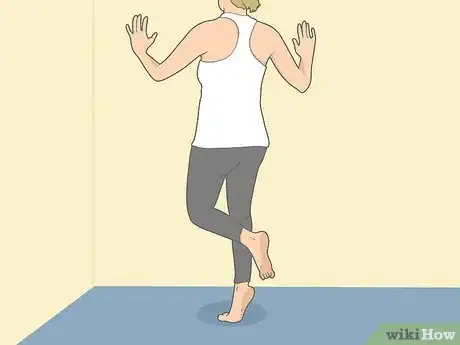
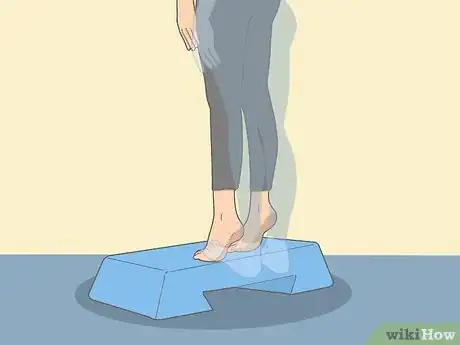
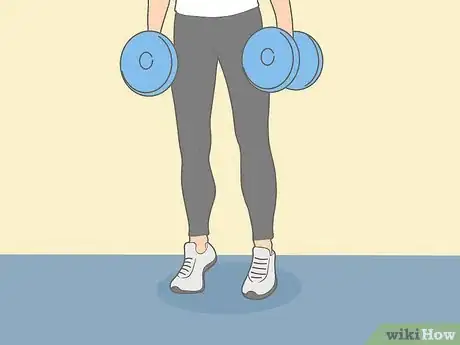


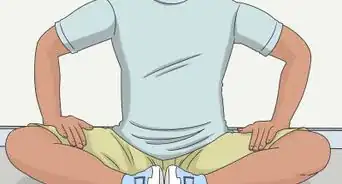
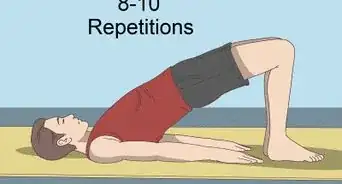
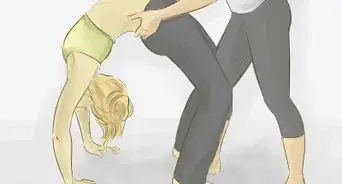
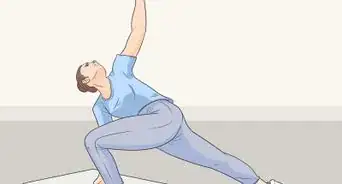



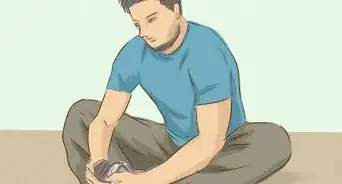







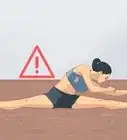

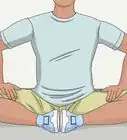




































Medical Disclaimer
The content of this article is not intended to be a substitute for professional medical advice, examination, diagnosis, or treatment. You should always contact your doctor or other qualified healthcare professional before starting, changing, or stopping any kind of health treatment.
Read More...